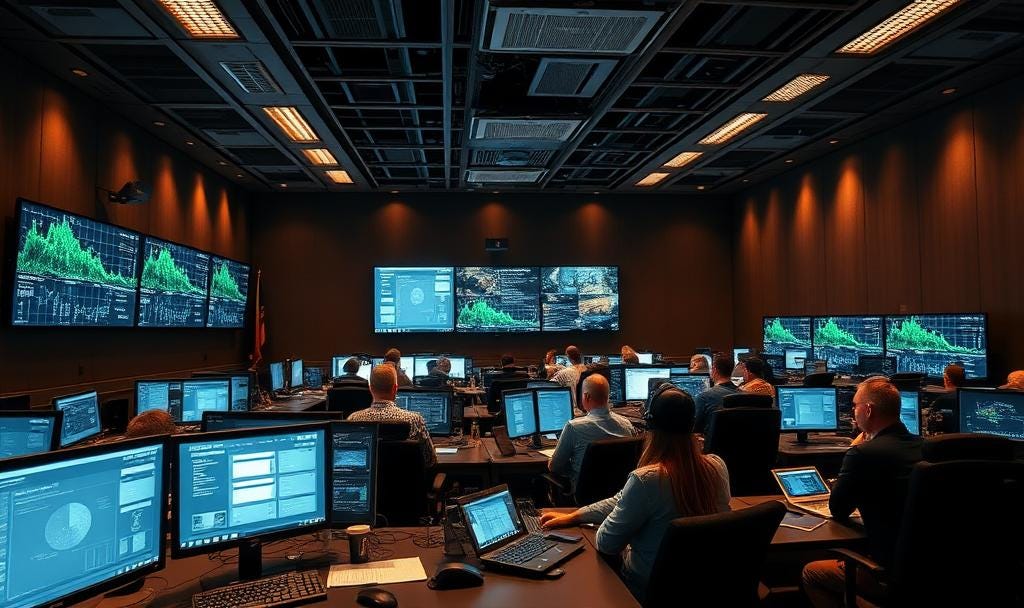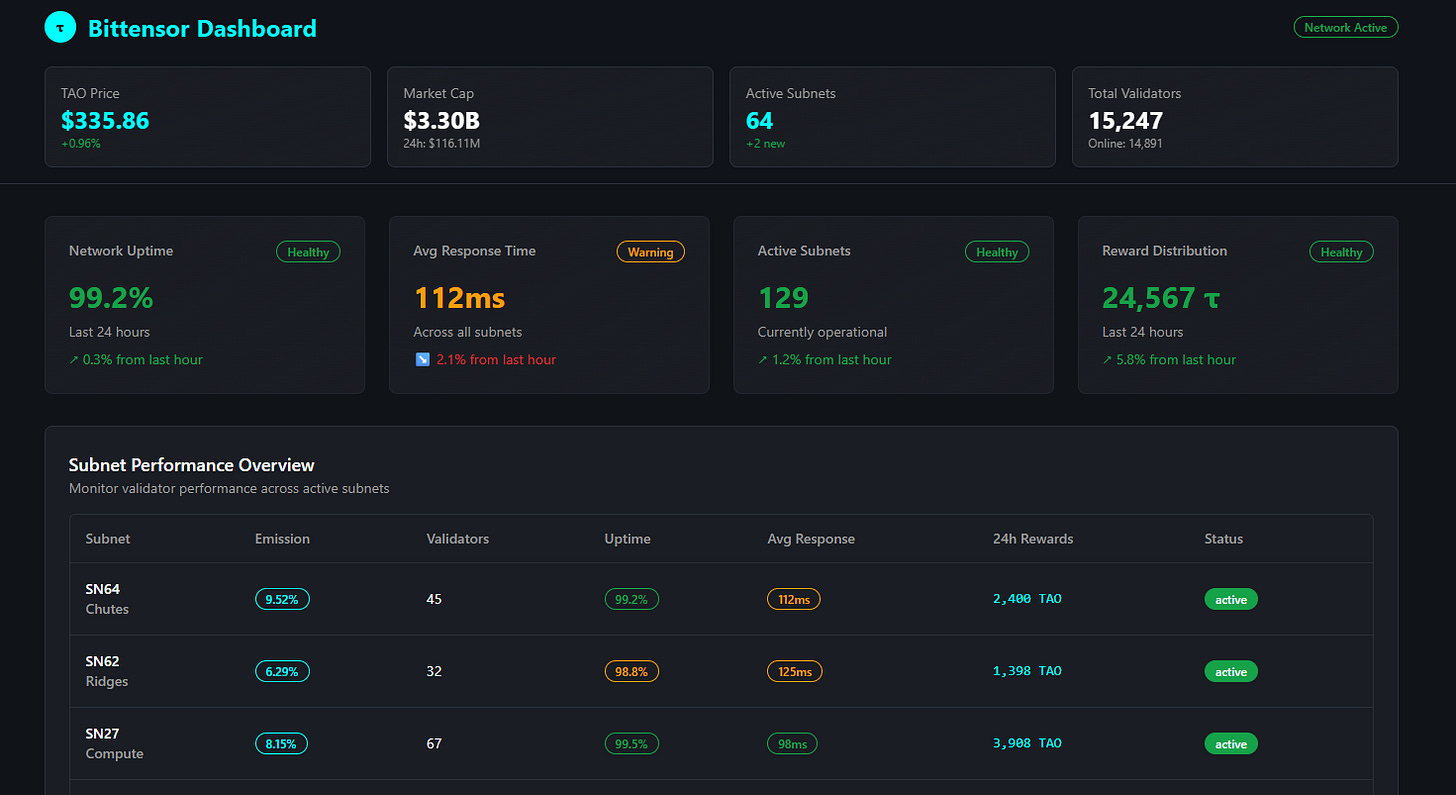Corporate Risk Skills: Bittensor's Missing Piece (Even as a Beginner)
3 Ways Corporate Professionals Can Strengthen Bittensor Today
As someone who has spent a long time around corporate risk management, designing business continuity plans, stress testing financial models, and building crisis response frameworks, I never really considered how these skills would be valuable in the world of decentralized AI.
And when I first started learning Python for Bittensor, I assumed my professional experience was irrelevant to this technical ecosystem. I was wrong.
What I've discovered is that Bittensor doesn't just need machine learning experts, it desperately needs people who understand how complex systems fail and how to build resilience.
The Enterprise Risk Mindset: Why It Matters for Bittensor
In my corporate career, I learned that true resilience isn't all about avoiding risk.
It's about designing systems that can absorb shocks and adapt to change.
The most robust organizations don't eliminate all risk; they build early warning systems, create redundancy, and foster cultures where problems get surfaced before they become a crisis.
Bittensor faces similar challenges to any complex system, but with a crucial difference: it's decentralized.
There's no central authority to issue directives or allocate resources during disruptions. This makes community-driven risk awareness even more critical.
As I wrote in an earlier issue, Bittensor has a "funnel" of participation where anyone can add value at their current skill level.
Risk management expertise sits right in the middle of that funnel: accessible to non-technical professionals but providing immense value to the network.
Risk Areas Where Beginners Can Make a Difference
Network Health Monitoring: The Eyes and Ears of the Community
In enterprise risk management, I've seen so much of "dashboard culture".
The War Room where intensive collaboration (more shouting and screaming) manages the organization through critical incidents.
The expertise convened together to figure out a resolution.
The rapid decision making required.
All this needs a precursor to spot emerging problems: creating simple visual indicators assembling into a readable dashboard that anyone can understand to spot emerging problems.
This is where issues are first flagged before escalation to the highest decision makers.
Bittensor needs the same approach. You don't need to be a developer to monitor basic network health metrics:
What to monitor: Validator uptime, response times, reward distribution patterns.
How to do it: Use tools like Taostats.io to track these metrics in a simple Google Sheet.
Why it matters: Early detection of anomalies can prevent larger network issues, and this is something you can do yourself instead of relying on others to do it for you.
To visualize this, I vibe coded a subnet dashboard: this is easily replicable and usable for real use cases.
Knowledge Resilience: Building Beginner-Friendly Safety Nets
In my corporate role, I learned that single points of knowledge create massive risk.
When the go-to person leaves, or threatens to leave, all hell breaks loose as a long-running potential vulnerability is exposed.
Bittensor faces the same challenge with its documentation. Much of it assumes technical knowledge that beginners don't have, creating fragility in the ecosystem.
What everyone can do, regardless of technical skill level:
Document your own recovery steps when things go wrong.
Create simple checklists like "5 Things to Check Before Staking".
Build a "Beginner Incident Report" template for common issues.
In my crypto past, in a rush one day I accidentally sent ETH to the wrong address.
It wasn’t worth much at the time, but with ETH at near $5k now, a little piece of my heart breaks now every time I think of it.
To make sure this didn’t happen again, I created a "Wallet Safety Checklist" that I still follow to this day, as missing even one step on it could someday lead to me losing all my funds.
Community Resilience: Strengthening Social Infrastructure
In enterprise risk management, I learned that technical systems are only as strong as the human networks supporting them. During crises, it's the relationships and communication channels that determine success or failure.
Bittensor's decentralized nature makes community resilience even more critical:
What we can all do:
Organize support channels in Discord.
Create "Buddy Systems" for new users.
Document community norms and best practices.
Maciej Kula’s learnbittensor.org is a shining example of the real impact this can have. A beginner’s focused community helping countless users navigate the ecosystem and a Discord server where mistakes and recovery stories are shared along with successes along the way.
Your First Steps to Building Resilience (Even as a Beginner)
You don't need advanced coding skills to contribute to Bittensor's resilience. Here's how to get started:
Pick one subnet and spend a few minutes daily observing its health metrics using Taostats.
Document one recovery story from your learning journey (what went wrong and how you fixed it).
Share in beginner-friendly terms using a template: What I Noticed, Why It Matters and What to Do.
Connect with others doing similar observation work to build collective awareness.
In a decentralized network, every observation strengthens the whole.
Any risk experience is relevant in this new world and it's exactly what will help build a decentralized AI future that's robust, reliable, and worthy of the world we all want for future generations to live in.
What risk observation have you made in your Bittensor journey? Feel free to share your insights in the comments, I'd love to feature community contributions in a future issue.
If you're new to Bittensor and want to understand how to get started, check out Issue 6's funnel framework.
For the technical foundation, revisit Issue 2's whitepaper breakdown.
Until next week.
Cheers,
Brian



